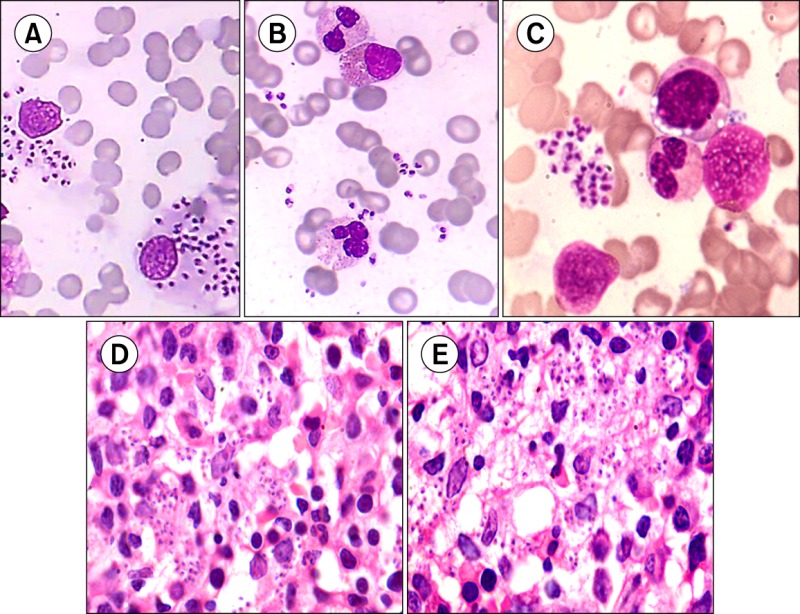
A 35-year-old Afghan woman with systemic lupus erythematosus for 3 years had been on immunosuppressive and low-dose steroid therapy for 1 year. She presented with fever, abdominal pain, and excessive sweating for 2 months. Generalized lymphadenopathy, hepatomegaly, splenomegaly, and hyperpigmentation of the forehead, abdomen, and hands were noted. Laboratory tests revealed hemoglobin level of 7.9 g/dL, white blood cell counts of 1.0×109/L, absolute neutrophil counts of 0.4×109/L, and platelet counts of 56×109/L. A peripheral blood smear revealed polychromasia, spherocytes, and nucleated red blood cells. In the bone marrow, abundant intracellular (A) and extracellular amastigotes appearing as single cells (B) or in small clusters (C) were detected. Numerous macrophages loaded with amastigotes were seen (D and E) in a trephine biopsy. The patient was treated with stibogluconate and responded well to therapy. Peripheral counts were normalized after 2 weeks, visceromegaly was resolved after 3 weeks, and no amastigotes were found in the bone marrow at the end of treatment. Physicians should be aware of the possibility of an underlying parasitic infestation in immunocompromised patients, as cytopenia may not always be due to primary disease or a consequence of immunosuppressive therapy.




 PDF
PDF ePub
ePub Citation
Citation Print
Print


 XML Download
XML Download